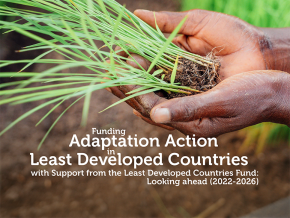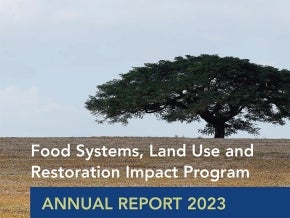
Lauren Naville Gisnås is a Senior Advisor on environmental and climate-related issues at the Norwegian Agency for Development Cooperation (Norad) and an Advisor to Norway’s GEF Council Member. In an interview, she reflected on the potential of global efforts to address marine litter, plastic pollution, and the impacts of climate change, and shared what inspired her from a recent visit to a GEF Small Grants Programme initiative in Indonesia.
What do you do for a living, and what do you enjoy most about it?
Environmental issues have always been close to my heart and being able to work on such issues daily is an honor. When you work on environmental issues from a development perspective, you are forced to take into account many social, economic and cultural aspects which make these challenges particularly complex but also fascinating and inspiring to work through.
In my current position at Norad, I am responsible for overseeing climate change adaptation projects. I am especially keen on supporting nature-based solutions that can help communities avert the effects of climate change. There are already many good examples of this – forest regrowth, coastal restoration, and regenerative agriculture can very effectively reduce flood risks and sequester carbon. Still, I believe we need to raise awareness about these solutions so that they can receive more needed investment.
How did you get into this line of work?
I got engaged in environmental issues way back in high school when I wrote a report on marine pollution. I got really inspired and that’s when I knew that I wanted to study environmental issues and pursue a career in that field. I studied environmental issues and social anthropology at the University of California, Santa Barbara, with a focus on applied ecological anthropology and political ecology. Once I graduated, I headed back home to Switzerland, worked for WWF International, and a year later started a master’s degree in development studies in Norway. I continued to focus on environmental issues and wrote about bioprospecting in Chiapas, Mexico, for my master’s thesis. I was thrilled to find a way to work on both environmental and development issues and have continued to do so since.
Is there a Global Environment Facility initiative that is close to your heart?
Addressing marine litter and plastic pollution is a priority for Norway, and we have been happy to see the GEF increase its support in this area over the past several years. Another part of the GEF’s work that I find inspiring and exciting is its work with the private sector. The Non-Grant Instrument window has helped mobilize outside financing and supported innovative new approaches to dealing with issues such as biodiversity loss, for instance through the recent Wildlife Conservation Bond. I look forward to seeing more results from this blended finance work which I believe will inspire other funds and programs.
Environmental issues are very often complicated and concerning. What gives you hope?
Environmental issues are man-made and can be solved by humankind. The engagement of young people and the sharing of traditional knowledge of local and Indigenous communities gives me hope. Watching my children’s engagement, when they decide by themselves to collect litter in our nearby forest or at the beach; following the different youth movements; and witnessing the commitment and innovative solutions advanced by local communities, these are the reasons why I believe there still is hope for our planet.

What are you looking forward to in the year ahead?
I’m looking forward to finally being able to meet colleagues face-to-face, especially my international counterparts at the GEF Council, and being able to visit the projects we support in the field, as I recently did in Indonesia, on the island of Nusa Penida just off Bali. I was so pleased to see the work underway across 13 villages there with support from the GEF Small Grants Programme. The activities spanned organic farming, solar panels, biogas, seaweed farming, waste management, and ecotourism, with local people in the forefront. It was inspiring to see community leaders inspire their fellow villagers to adopt sustainable practices, be it through the farmer field school or the learning center. There was also a strong focus on maintaining cultural identity and teaching young people local dances and traditional music and instruments. And the locally organically produced food tasted great!
Such field visits and opportunities to discuss with local participants and organizations are always so inspiring, and remind me why I chose to do this work. I also look forward to seeing how countries renew their engagements after the pandemic at upcoming environmental meetings. And of course, I look forward to kicking off the GEF-8 funding cycle, which will dramatically scale up financing to address environmental challenges including plastic pollution and ocean health over the coming four years. I also look forward to seeing how the GEF’s work will be relevant for climate change adaptation.
What changes do you hope to see in the world by the time you retire?
By the time I retire, I hope strong international cooperation will have solved our major global environmental challenges. The youth of today will by then be leading us in the right direction, ensuring that nature is factored into all the decisions we make and is accounted for in all economic calculations.
What advice would you give a young person contemplating a career related to the environment?
I would strongly suggest volunteering for a local environmental organization as a start. That will give you valuable working experience and allow you to start building a network. Get engaged in different campaigns and build a strong knowledge foundation. That will definitely pay off for the future!


